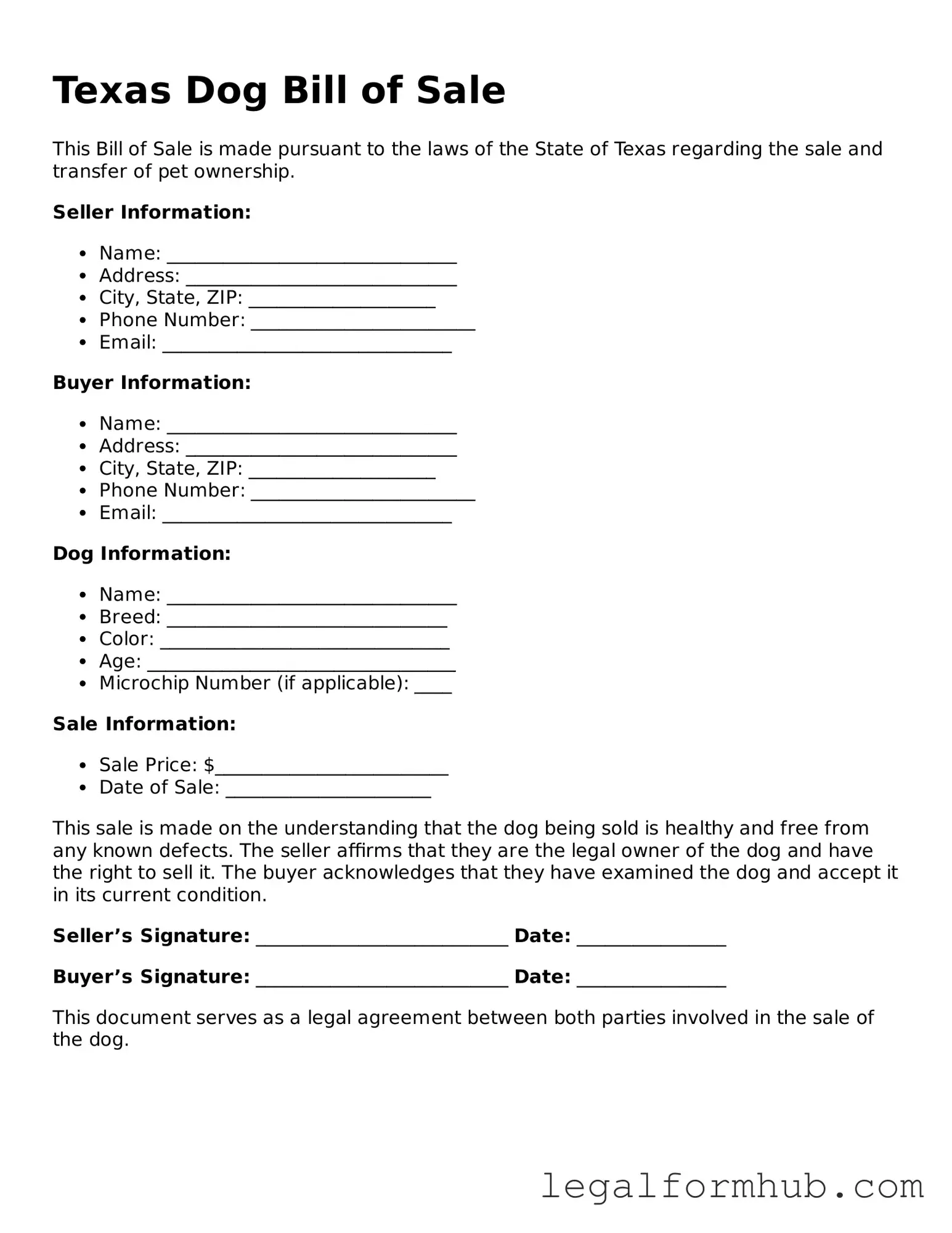The Texas Dog Bill of Sale form shares similarities with a general Bill of Sale, which is used to transfer ownership of various personal property items. Like the Dog Bill of Sale, a general Bill of Sale outlines the details of the transaction, including the buyer, seller, and description of the item being sold. Both documents serve as proof of ownership transfer, providing legal protection for both parties involved in the sale.
Another document akin to the Dog Bill of Sale is the Pet Adoption Agreement. This agreement is often used by animal shelters or rescue organizations when placing pets in new homes. Similar to the Dog Bill of Sale, it includes details about the pet, the adopter's information, and any terms and conditions regarding the care and treatment of the animal. Both documents emphasize the importance of responsible pet ownership and may include clauses to ensure the pet's well-being.
The Purchase Agreement for Livestock is another document that resembles the Dog Bill of Sale. This agreement is used when buying or selling livestock, including dogs bred for specific purposes. It includes essential information about the animals, such as breed, age, and health status. Like the Dog Bill of Sale, it serves to protect both the buyer and seller by documenting the transaction and outlining any warranties or guarantees related to the animal's condition.
A Lease Agreement for Pets is also similar in nature to the Dog Bill of Sale. While a Bill of Sale transfers ownership, a lease agreement allows one party to use and care for a pet while the other retains ownership. Both documents require detailed descriptions of the pet and the responsibilities of each party. They ensure clarity and mutual understanding regarding the pet's care and any applicable fees or conditions.
The Animal Sale Contract is another relevant document that shares characteristics with the Dog Bill of Sale. This contract is typically used in breeding situations and outlines the terms of the sale, including the rights and responsibilities of both the seller and the buyer. Just like the Dog Bill of Sale, it includes information about the animal and may also cover health guarantees or breeding rights, ensuring both parties are aware of their obligations.
In addition, a Transfer of Ownership form for pets is similar to the Dog Bill of Sale. This form is often used when a pet is given to a new owner without a monetary exchange. It documents the transfer of ownership and may include important details about the pet's medical history and care instructions. Both documents aim to provide clarity and protect the interests of the new owner while ensuring the pet’s well-being.
When starting a business in California, it's essential to understand the significance of the Articles of Incorporation form, as it lays the foundation for your corporation by detailing important aspects such as its name and management structure. To streamline the process of incorporating your business, you can access a variety of resources, including Free Business Forms, which provide necessary templates and guidance for completing this crucial legal document.
Lastly, the Veterinary Release Form can be compared to the Dog Bill of Sale in terms of its focus on the animal's health and care. This form is often used when transferring a pet to a new owner, allowing the new owner to access the pet's medical records. Like the Dog Bill of Sale, it emphasizes the importance of responsible pet ownership and may include information on vaccinations, treatments, and other relevant health details.
